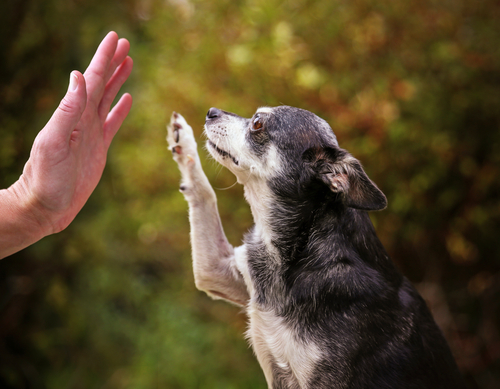Everyone will see the end of their life. Our dogs are no exception. But our dogs are lucky because they have us to depend on as stewards of their care. If your dog has a terminal illness, it will fall to you to face this challenge. Peace, dignity and pain free existence are all a part of this journey that we must champion for our dogs. There are some important considerations if you are a dog’s hospice guardian.
First, set up a consultation with your vet to talk about what you may need to expect. If you want to do more, you can see if there is an animal hospice service in your area. Lap of Love is a service group of veterinary professionals dedicated to end of life care for pets. You can find a local Lap of Love veterinarian by searching www.lapoflove.com.

A poor long term prognosis does not mean nothing can be done. Remember, your dog does not know that he has a terminal disease. One of the wonderful things about dogs is their ability to live in the moment and find joy in small things.
Terminally ill patients need certain things to be comfortable.
They must be receiving nutrition. Depending upon the disease process, the ways to meet this need sometimes require creativity, so your vet needs to know if your dog will not eat or is eating insufficiently.
Their pain must be recognized and addressed. There is no reason for your dog to suffer. Be sure that you find out how to tell if your dog is in pain and that you know what to do. Most of my incurable patients are already on a pain management protocol, even before their condition is decided to be terminal.
Emotional nourishment is also important. Since dogs are designed to live in groups, be sure that you spend time every day bonding with your dog. Resist the urge to hide from the pain of her loss prematurely. Studies show that positive brain chemicals are released for dogs when their people are present and touching them. 1 So hold her and stroke her. It will help you both.

Take care of yourself too.
You are your dog’s primary caregiver. She would want your needs looked after also. Allow yourself to navigate the steps of grief. Acknowledge how much she means to you. Sometimes just having a plan for how you will handle what is to come gives you a sense of control. Merely deciding if you want a natural death or a managed death can give you peace.
Discuss your wishes with your veterinary team. Together you can make a list of criteria that must be met for your dog’s quality of life. The goal of animal hospice care is to provide comfort and quality of life for your dog AND for you. The guidelines listed here can be a great start. You must not feel alone in this journey. Everyone who loves a dog knows how you feel.
If you have a touching hospice story, please share it on my Facebook page, by clicking here. Others that are hurting need to know they are not alone.
1.Dogs’ endocrine and behavioural responses at reunion are affected by how the human initiates contact. Physiol Behav. 2014 Jan 30;124:45-53.Rehn T, Handlin L, Uvnäs-Moberg K, Keeling LJ.
